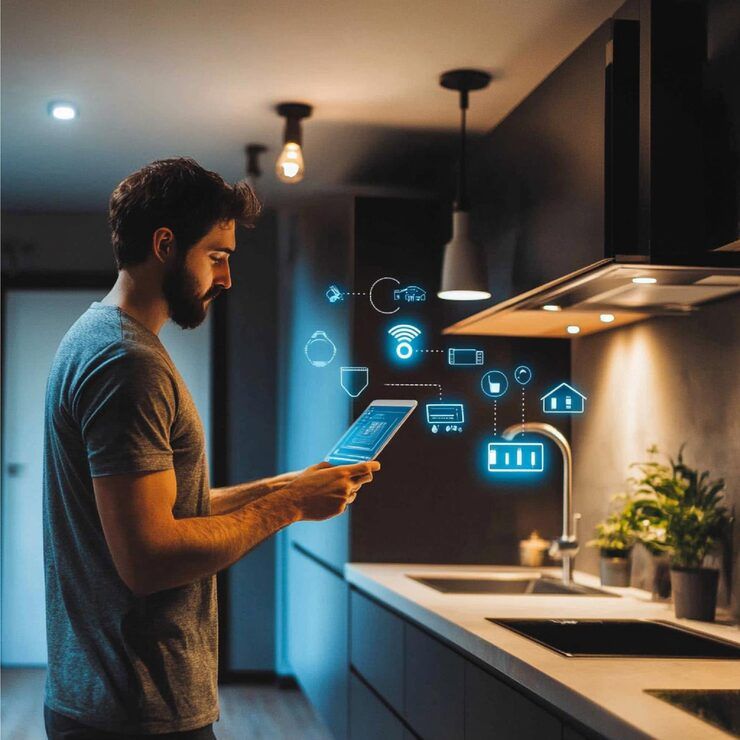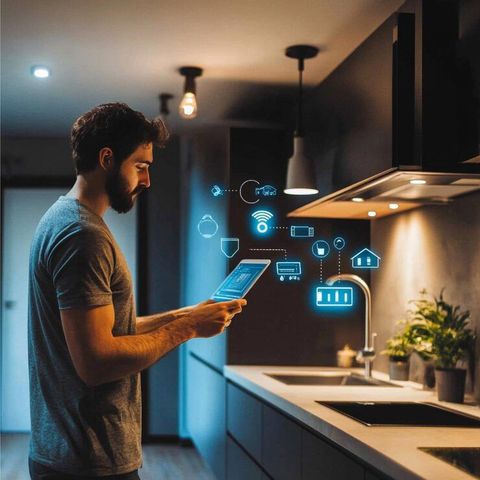
A Complete Guide to Home Automation: Insights, Details, and Expert Knowledge
Home automation refers to the integration of connected devices, sensors, and systems in a residence that enable control, monitoring, and automatic operation of lighting, climate, security, appliances, and other functions. It transforms everyday manual tasks like turning off lights or adjusting thermostats into automated or remotely controlled actions.
Home automation exists because of advancements in the Internet of Things (IoT), artificial intelligence, and wireless communication. People now expect greater convenience, energy efficiency, and security from their homes. The idea is to create living spaces that respond intelligently to human behavior, reducing manual effort while optimizing comfort and sustainability.
 Importance – Why this topic matters today, who is affected, and which problems it solves
Importance – Why this topic matters today, who is affected, and which problems it solves
Why it matters today
-
Urban lifestyles are increasingly fast-paced, leading to higher demand for automated convenience.
-
Rising energy prices and environmental awareness drive the need for smart energy management.
-
Security, comfort, and sustainability are now combined through connected home ecosystems.
-
Advancements in interoperability and artificial intelligence make automation systems more reliable and affordable.
Who it affects
-
Homeowners: Looking for energy-efficient, safe, and convenient living environments.
-
Builders and architects: Incorporating smart-ready infrastructure into new designs.
-
Tech enthusiasts: Exploring innovations in IoT and smart ecosystems.
-
Policy makers: Promoting sustainable energy use through smart technologies.
What problems it solves
-
Saves energy by automatically managing lights, air conditioning, and appliances.
-
Improves home security through smart locks, motion sensors, and surveillance systems.
-
Increases accessibility for elderly individuals or people with disabilities.
-
Reduces long-term maintenance and operational inefficiencies.
-
Enables data-driven insights into power consumption and household patterns.
Recent Updates – Trends, changes, or news from the past year
The year 2024–2025 has seen major advancements in home automation technologies and adoption trends:
-
Interoperability through Matter Protocol: Devices from different brands now work together seamlessly, simplifying setup and control.
-
AI-driven personalization: Automation systems now learn user habits and adjust lighting, temperature, and entertainment preferences accordingly.
-
Energy efficiency and sustainability: Homes are increasingly connected with renewable systems like solar panels and smart grids.
-
Enhanced user control: Apps now allow presence-based automation, schedules, and custom triggers for smarter routines.
-
Integration with wellness technologies: Indoor air quality monitoring, circadian lighting, and noise management are being incorporated into smart home systems.
-
Rise of “smart-ready” homes: Builders are offering pre-installed wiring and infrastructure to support future automation upgrades.
Laws or Policies – How home automation is affected by rules, regulations, or government programs
-
Energy efficiency initiatives: India’s Bureau of Energy Efficiency encourages integrating home automation to optimize residential energy consumption.
-
IoT security guidelines: The Telecommunication Engineering Centre outlines best practices for securing connected devices to ensure consumer privacy and safety.
-
Smart city missions: Government programs encourage integrating smart technologies into urban housing for sustainable living.
-
Telecommunication regulations: Updated policies govern the use of data networks for IoT devices, ensuring reliability and compliance.
-
Standardization efforts: National and international standards aim to improve device certification, interoperability, and safety for connected home technologies.
Tools and Resources – Helpful tools, apps, calculators, websites, and templates
Here are several key tools and resources for anyone exploring home automation:
-
Control apps and hubs: Google Home, Amazon Alexa, Apple HomeKit – centralized platforms for managing smart devices.
-
Protocols and ecosystems: Matter, Zigbee, Thread, and Z-Wave – ensure interoperability across brands.
-
Planning templates: Smart home wiring checklists and pre-construction design templates help streamline installations.
-
Open-source platforms: Home Assistant and OpenHAB – for DIY automation customization.
-
Energy monitoring tools: Smart meters and analytics dashboards track consumption and suggest improvements.
-
Security guidelines: IoT device encryption and firewall configurations help protect user data.
-
Market research sources: Industry reports provide insights on growth trends and future adoption patterns.
FAQs – Frequently Asked Questions
Q1: What’s the difference between a “smart home” and “home automation”?
A: A smart home uses connected devices for remote control, while home automation emphasizes automatic routines and self-managed systems that operate with minimal input.
Q2: Can automation be added to an existing home?
A: Yes, retrofitting is possible through wireless smart switches, plugs, and hubs. However, integrating automation during construction offers better wiring and system stability.
Q3: How can I ensure device compatibility?
A: Choose products that support open standards such as Matter, Zigbee, or Thread. These standards allow devices from different brands to work together reliably.
Q4: Are there real benefits beyond convenience?
A: Yes, home automation provides measurable advantages energy efficiency, enhanced security, accessibility for seniors, and overall lifestyle improvement.
Q5: What are the biggest challenges in home automation?
A: The key challenges include device fragmentation, data privacy, cybersecurity risks, and ensuring long-term compatibility with evolving standards.
Conclusion
Home automation represents the next stage of connected living—where comfort, security, and sustainability converge through technology. As automation becomes more intelligent, adaptive, and energy-conscious, it helps transform homes into responsive, efficient, and personalized environments.
For homeowners and developers alike, the journey toward a smart home begins with understanding goals, ensuring interoperability, and building with scalability in mind. By focusing on reliable technologies, security practices, and sustainable designs, it’s possible to create a home that not only simplifies life but also enhances well-being and conserves energy for the future.






